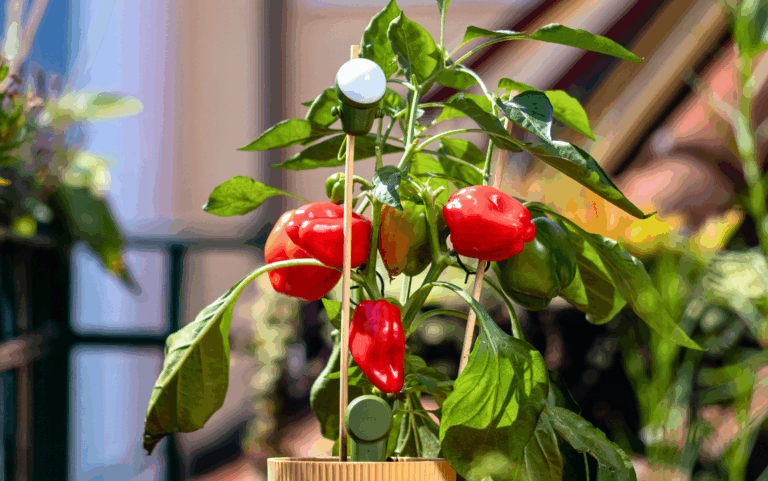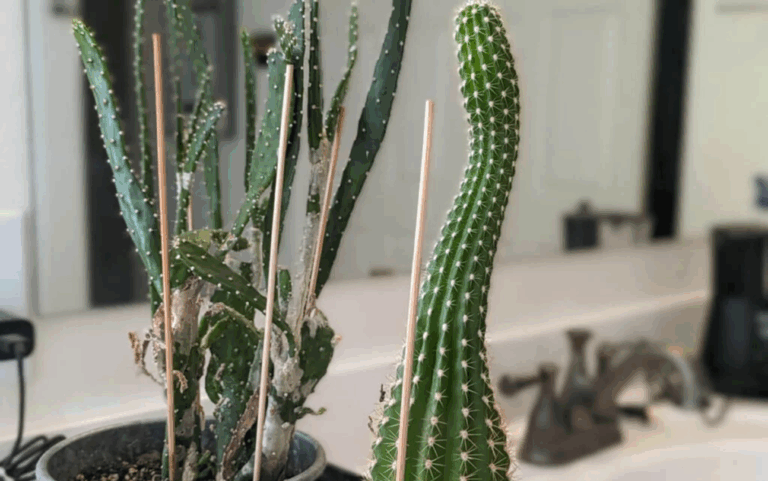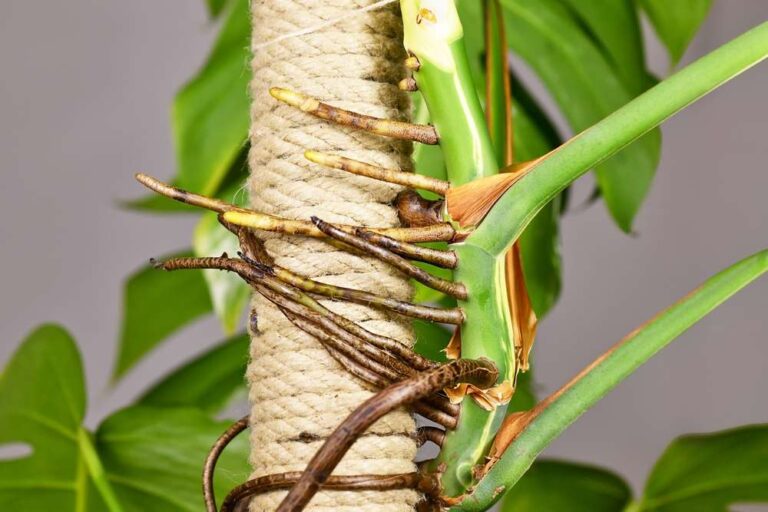
You might be familiar with this: you pass by a shriveled plant with sad, dry leaves that looks like a plucked chicken. Clearly, this plant is not doing well. But plants are incredibly resilient creatures and can often be nursed back to health with some effort and love. But how do you really know if the plant is still alive? And how can you best bring it back to life?
4 Signs Your Plant is Still Alive
Here are the four indicators to look for. It’s best to check all of them, but often just one is enough to save a plant from demise:
- There is still some Green Is the plant still green? Does it perhaps have small, new shoots or leaves somewhere? If you don’t see any, perform a “scratch test”: Use a sharp knife to scratch the outer surface of a stem. If the outer layer comes off easily, revealing moist green tissue inside, then the plant is still alive. Check near the lower end of the stem, close to the root base for best results.
- Juicy Leaves The leaves of a plant often provide important clues about its condition. If they look fresh and juicy, that’s a good sign! On the other hand, wilted, yellow, or brown leaves can indicate a problem. Gently remove a wilted leaf – if it’s dry and brittle, it’s dead. Green leaves, however, should feel elastic.
- Firm Stems Living stems often have a certain firmness. Try bending a stem gently. If it bends easily and doesn’t spring back, that’s a sign of dead tissue. A healthy stem, however, should be flexible and return to its original position after bending.
- Strong, Bright Roots The roots are the foundation of every plant. Carefully lift the plant out of the pot and examine the roots. Vibrant roots are typically firm, fleshy, and light-colored. Dead roots, on the other hand, are brown, black, or fibrous. Mushy roots are also a very bad sign. If part of the roots is still healthy, there is still hope!

If you don’t observe any of these signs in the plant, it’s time to say goodbye. Dispose of your plant in the organic waste, but make sure the plant pot goes into the regular trash. And remember: gardening is a constant learning process. Just because it didn’t work this time doesn’t mean it will end the same way next time. No one, truly no one, is born with a green thumb.
How to Rescue Your Plant
If your plant shows signs of life, it’s time to roll up your sleeves and nurture it back to health. Follow these steps:
- Pruning: Remove all dead and dried parts of your plant, including leaves, stems, and flowers. This directs your plant’s energy to the healthier sections and encourages new growth. For example, you can take the Fiskars plant shears to help.
- Repotting: Give your plant fresh soil, e.g from Floragard, and ensure that the soil is well-draining. Repotting also saves you the trouble of fertilizing, as commercial soil is usually pre-fertilized.
- Adequate Light: Place your plant in a suitable location with enough sunlight. Light is essential for photosynthesis and the overall health of the plant. If the sun is shining outside and it’s warm enough, give it a few hours or days of vacation outdoors.
- Learn What Your Plant Needs: Plants have different requirements. Use our Plant ID tool to find out what species your plant belongs to. In the plant library, you’ll also find a profile for your plant, explaining its specific location preferences and care needs. Consider getting a FYTA Beam if you’re unsure.
- Have Some Patience: Don’t expect instant results. Growth takes time, and your plant has been under tremendous stress. It may take weeks or even months before you see significant improvement. But it’s all the more rewarding when it thrives again!

Not everything that looks dead is actually dead. Look closely, search for signs of life, and give your plant another chance. It’s worth it.





